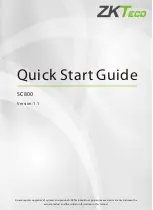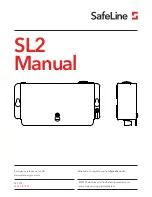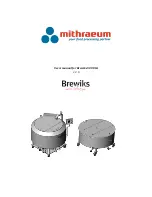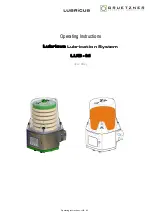
146 Fieldbus Communication
WAGO-I/O-SYSTEM 750 XTR
750-352/040-000 FC ETHERNET G3 XTR
Manual
Version 1.3.0
The DHCP server then receives this message. The server contains a database in
which the MAC ID and IP addresses are assigned to one another. When a MAC
address is found a broadcast reply is transmitted via the network.
The fieldbus coupler/controller “listens” at the specified Port 68 for a response
from the DHCP server. Incoming packets contain information such as the IP
address and the MAC address for the fieldbus coupler/controller. A fieldbus
coupler/controller recognizes by the MAC address that the message is intended
for that particular fieldbus coupler/controller and accepts the transmitted IP
address into its network.
If there is no reply, the inquiry is sent again after 4 seconds, 8 seconds and 16
seconds.
If all inquiries receive no reply, a blink code is reported via the I/O LED.
If you want the IP address and subnet mask are stored in the EEPROM when
using DHCP, then the option “use IP from EEPROM” has to be switched (via the
WBM, HTML page “Port”) following the configuration via DHCP.
When booting next the fieldbus coupler/controller uses the parameters saved in
the EEPROM.
The difference between BOOTP and DHCP is that both use different assignment
methods and that configuration with DHCP is time limited. The DHCP client
always has to update the configuration after the time has elapsed. Normally, the
same parameters are continuously confirmed by the server.
BOOTP can be used to assign a fixed IP address for each client where the
addresses and their reservation are permanently saved in the BOOTP server
database.
Because of this time dependency, DHCP is also used to dynamically assign
available IP addresses through client leases (lease time after which the client
requests a new address) where each DHCP client address is saved temporarily
in the server database.
In addition, DHCP clients do not require a system restart to rebind or renew
configuration with the DHCP server. Instead, clients automatically enter a
rebinding state at set timed intervals to renew their leased address allocation with
the DHCP server. This process occurs in the background and is transparent to
the user.
There are three different operating modes for a DHCP server:
•
Manual assignment
In this mode, the IP addresses are permanently assigned on the DHCP
server to specific MAC addresses. The addresses are assigned to the MAC
address for an indefinite period.
Manual assignments are used primarily to ensure that the DHCP client can
be reached under a fixed IP address.
•
Automatic assignment
For automatic assignment, a range of IP addresses is assigned on the
















































